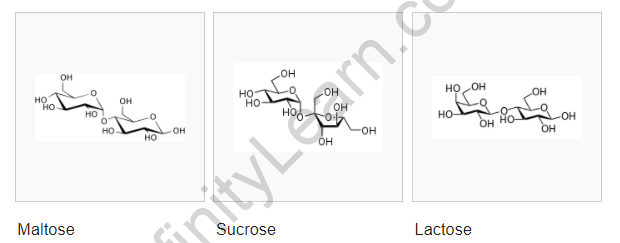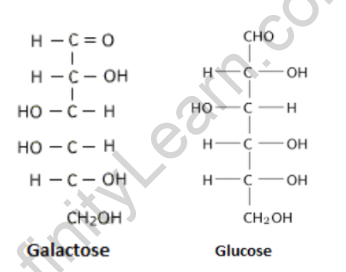Table of Contents
Carbohydrates are the most abundant and widely distributed organic compounds in nature and are an essential component of all living organisms. Green plants produce carbohydrates from carbon dioxide and water during the photosynthesis process. Carbohydrates are energy sources and structural components in organisms; carbohydrates also contribute to the structure of nucleic acids, which contain genetic information.
Although there are several classification schemes for carbohydrates, one of the most widely used is the separation into four primary groups—monosaccharides, disaccharides, oligosaccharides, and polysaccharides.
Most monosaccharides, or simple sugars, are found in grapes, other fruits, and honey. They can have three to nine carbon atoms, but the most common examples have five or six linked together to form a chainlike structure. The three most common simple sugars, glucose (also known as dextrose, grape sugar, and maize sugar), fructose (fruit sugar), and galactose, all have the same molecular formula (C6H12O6), but their atoms are arranged differently, resulting in different properties; thus, they are isomers.
Overview
Oligosaccharides are carbohydrates made up of several monosaccharide residues linked together by a glycosidic linkage that enzymes or acids can hydrolyze to yield the constituent monosaccharide units. While no strict definition of an oligosaccharide has been established, it is generally accepted that it is a carbohydrate composed of two to ten monosaccharide residues with a defined structure. Some oligosaccharides, such as maltose, sucrose, and lactose, were trivially named before their chemical composition was discovered, and these names are still in use today.

Monosaccharides (from Greek monos: single, sacchar: sugar), also known as simple sugars, are the most basic units (monomers) of carbohydrates. The general formula is CnH2nOn, or [Cn(H2O)n] or CH2On, though not all molecules fitting this formula are carbohydrates (e.g., acetic acid). They are typically colourless, water-soluble solids. Only a few monosaccharides have a sweet taste, despite their name (sugars).
Glucose (dextrose), fructose (levulose), and galactose are examples of monosaccharides. Monosaccharides are the foundation for disaccharides (such as sucrose and lactose) and polysaccharides (such as cellulose and starch). Except for those at the end of the chain, every carbon atom that supports a hydroxyl group is chiral.
This results in a number of isomeric forms, all of which have the same chemical formula. Galactose and glucose, for example, are aldohexoses with distinct physical and chemical properties. The monosaccharide glucose is important in metabolism because it extracts chemical energy through glycolysis and the citric acid cycle to provide energy to living organisms.
Other monosaccharides can be converted to glucose in living organisms.

Glucose is a hexose used as an energy source and in synthesizing starch, glycogen, and cellulose. Pentose sugars are ribose and deoxyribose (in RNA and DNA, respectively).
Ketones, mannoheptulose, and sedoheptulose are examples of heptoses. Monosaccharides with eight or more carbons are uncommon because they are highly unstable. If a monosaccharide has more than four carbons, it exists as a ring in aqueous solutions.
Also read Important Topic: Plasmolysis.
FAQs
What are the four types of monosaccharides?
Hexoses, glucose, and fructose are the most important monosaccharides in fruits and vegetables. Mannose, galactose, xylose, and arabinose are examples of minor monosaccharides.
What are the differences between monosaccharides and oligosaccharides?
Monosaccharides, which include glucose, xylose, and fructose, are the single carbohydrate building blocks. Oligosaccharides are polysaccharides made up of 2-10 monosaccharides, including disaccharides and trisaccharides.

